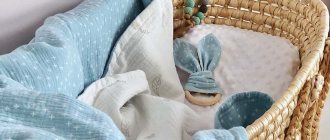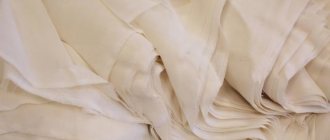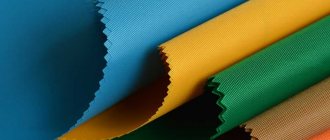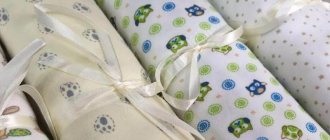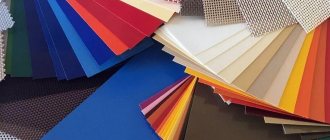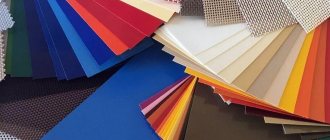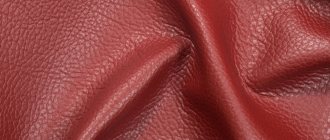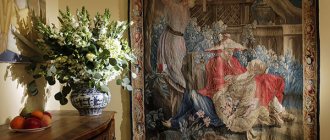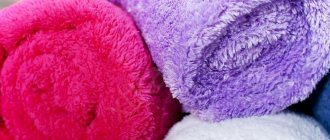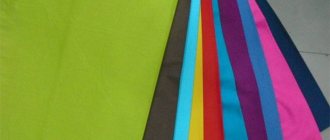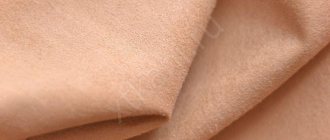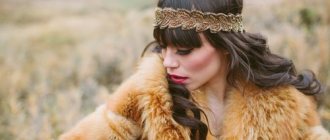Genuine leather suede is an expensive material that not everyone can afford. Modern technologies have made it possible to develop a method for producing artificial suede, which in appearance is practically no different from products made from natural raw materials. Ecosuede pleased not only ordinary mass consumers, but also animal activists. The need for natural leather used for the production of bags, gloves, upholstery materials, shoes, and belts has significantly decreased. A synthetic analogue has appeared on the goods market, pleasing with its quality and appearance.
What is ecosuede?
Ecosuede is practically no different in appearance from products made from natural raw materials.
Curious consumers gain confidence in materials when they understand what it is and what it is made of. There are different methods for producing eco-suede.
Woven varieties
Higher quality and more expensive material is made by weaving special microfiber threads. Woven fabrics are processed on brush machines, which split the thread-like surface layer in a strictly specified mode. As a result, ecosuede is formed with fibers of a certain height, evenly distributed over the entire surface.
Sometimes, to improve the quality of the fabric during weaving, additional looped threads are made, from which pile is then obtained.
Conditionally non-woven type of ecosuede
In other technologies, a pile layer of synthetic threads is glued onto a woven base. Often such eco-suede is called non-woven, although this definition is conditional. The base of the material is made of woven fabrics. The fibers are obtained by gluing a layer imitating suede onto the surface. The pile covering is fixed using conventional polyvinyl acetate adhesives or hot lamination.
Regardless of the method for obtaining a rough surface, the material is treated with Teflon to increase the ability to reject water and dust particles.
- Woven ecosuede is used for sewing jackets, raincoats, and gloves.
- Material with a glued pile layer is used mainly for upholstery.
Faux suede: what is it used for, how to care for it
What kind of material is this
Artificial suede is almost indistinguishable from real one. This is a synthetic or natural fabric with a characteristic pile on the front side. It is used both to create clothes and shoes, and for upholstery. There are two ways to produce the material:
- Woven. Microfiber threads are split into small fibers, which after processing are glued to the base. The result is a fleecy suede fabric that is highly durable. Without additional support, the material becomes unstable to tension. In this way, the highest quality and most expensive samples of material are made, from which jackets, raincoats, and gloves are sewn.
- Non-woven. Polyester fibers are glued onto a cotton, silk or synthetic base. This type is produced less expensively and is much easier to care for. This suede is used mainly for furniture upholstery.
Conclusion: Faux suede is a combination of microfiber or polyester fibers and a base of cotton, silk or synthetics. Properties of this matter:
- outwardly it looks like its natural analogue;
- the surface of the artificial suede is soft and velvety to the touch;
- the fabric is durable and resistant to deformation (does not wrinkle);
- does not fade;
- has good strength;
- repels dirt and dust;
- has low hygroscopicity;
- has a uniform color;
- resistant to the formation of kinks, cracks, abrasions;
- If you run your hand over the fabric, the fibers will easily change position.
Differences from natural
Even taking into account the maximum resemblance to the original, faux suede still has a number of features. How to distinguish natural suede from its artificial sister?
Pay attention to these details:
- Obtained by tanning animal skin, natural suede looks more natural. It has a heterogeneous porous structure, in which cracks and scratches are noticeable.
- Dyed natural suede cannot be a uniform color (the reason is its uneven texture).
- Natural material varies in thickness from center to edge.
- Original suede smells like leather, while artificial suede smells like synthetics.
- Natural suede is much more expensive than artificial suede.
Advice! Run your hand over the canvas: the natural color at the point of contact will become lighter.
Advantages and disadvantages
This artificial fabric has significantly more advantages than disadvantages. Let's look at everything in order.
Pros:
- As furniture upholstery, it is equally good for any interior style, be it classic or avant-garde. Its versatility is also evident in the successful use of suede both at home and in the office.
- Increased resistance to deformation and abrasions is another advantage of suede upholstery. Such sofa clothing will not crack or stretch under increased load, which its natural counterpart cannot boast of.
- The material does not accumulate static electricity.
- Artificial furniture suede has the same density throughout the entire perimeter, unlike natural one.
- The fabric is resistant to direct sunlight.
- This upholstery does not stick to the body.
- An interesting property of artificial suede for furniture: it gives warmth in winter and coolness in summer.
- The same goes for suede clothing. The skin in such clothes breathes.
- Faux suede is easier to clean thanks to the Teflon impregnation with which they are treated.
- This material looks no less aesthetically pleasing and attractive than the real thing. Its iridescent velvety surface attracts the eye.
Minuses:
- Fabric has limits. For example, it does not stand up to being used as a scratching post. Keep animals away from this upholstery.
- Light-colored material tends to get dirty quickly. The problem can be solved either by frequent cleaning or by a removable cover.
- Caring for faux suede is not easy. This material does not tolerate high humidity. Only dry cleaning or a minimum of water (solutions of ammonia or vinegar) is allowed.
Application
Suede is mainly used to produce:
- clothes,
- shoes,
- furniture upholstery.
Suede on a cotton base is used to sew outerwear and suits. Such things fit the figure well. Knitted suede is a good material for skirts, dresses and blouses. The material also makes stylish accessories: bags, belts, wallets, gloves. When it comes to footwear, faux suede is used to make everything from shoes to high boots.
In the production of furniture, artificial suede receives decent attention. It serves as upholstery for chairs, sofas, and armchairs. Suede has also found its way into everyday life. It makes excellent absorbent wipes for cleaning glass.
Care
How to remove stains from faux suede? Clothes can be washed using gentle detergents. Clean suede shoes with a brush and use water-repellent impregnation. But you need to be careful with the upholstery. Only dry cleaning is acceptable, especially if there is a greasy stain. Water will only make the situation worse.
Advice! When choosing impregnation for suede shoes, be careful and choose brands that have earned the trust of consumers. Poor-quality impregnation can glue the fibers into a dense crust, ruining the item forever.
For cleaning clothes, a soap solution is suitable, which is applied to the dirt with a soft brush. The solution should not be hot. After cleaning, pat the item dry with a towel to remove excess water. To avoid smudges, blot the item several times with a towel while drying.
Upholstery needs to be taken care of constantly. First, vacuum and brush regularly. Secondly, if possible, use protective covers. But if you managed to plant a stain, you will have to tinker. How to clean a suede sofa? Salt, an eraser, and washing powder will come to the rescue. Be sure to test any product on an inconspicuous area of the upholstery.
Advice! Movements when cleaning should be in the direction of the pile.
Faux suede is a useful and at the same time capricious material. But if all operating rules are followed, a product made from such fabric will serve the owner for a long time.
gidpotkanyam.ru
Properties and advantages
Ecosuede has gained popularity due to its practicality, aesthetic qualities, and affordable prices. In appearance, it is often completely indistinguishable from natural products. Moreover, the material has a soft, non-blinding iridescence, which additionally creates comfort. When used, many other advantages appear:
- The material, thanks to its soft, velvety surface, creates a pleasant tactile sensation.
- The ability to create a feeling of warmth in cool seasons and a feeling of cooling in hot weather is amazing. This quality is provided by microscopic air cavities located between evenly spaced villi.
- Ecosuede does not change its appearance for a very long time, does not stretch, or deform. It does not form bald patches, which, unfortunately, often appear over time on genuine leather suede.
- The material does not absorb moisture and has the ability to repel dirt particles.
- Ecosuede has a uniform and durable color that does not change with long-term use.
- Artificial suede is resistant to mechanical stress, does not tear, does not form kinks, and always looks well ironed.
- A characteristic feature is the ability to change the direction of the villi when stroking. By swiping your hand you can create special effects on the surface.
Description of material
Artificial suede is a synthetic analogue of natural material that reliably imitates its appearance. A non-specialist will not be able to determine at first glance what type of suede is in front of him until he sees the cost of the product: the artificial version is much cheaper. Manufacturers call this soft and beautiful material “new generation technology.” The production uses polyester, which gives the material incredible strength, as well as natural cotton, which provides a velvety, pleasant-to-touch texture.
In many respects, artificial suede is superior to its natural counterpart. Natural material is very expensive and difficult to care for, while synthetic material is cheaper, is strong and durable, and is not afraid of scratches and creases, since they are practically invisible on the surface. Practical, effective and budget-friendly fabric has become a serious competitor and has displaced natural options on the market.
Features of use, sewing
Synthetic eco-suede made from microfiber fibers can be used for sewing bags.
Ecosuede is a diverse group of materials that can be used for sewing dresses, suits, outerwear, shoes and accessories. It is important to know the composition of the fabric and its manufacturing technology in order to decide on the direction of use:
- Eco-suede with fibers glued to knitwear looks great in dresses, skirts, and blouses. It drapes easily, forms beautiful folds and flounces.
- Fabric with lint on a thick cotton canvas holds its shape well and can be used for sewing suits, jackets, and cardigans.
- Synthetic eco-suede made from microfiber fibers has a high density and thickness. It can be used for upholstering furniture, making shoes, bags, sewing jackets and raincoats.
Production technology
The process of sueding natural leather using tanning substances helps give suede strength, ductility, softness and velvety. The production of suede fabrics is divided into several stages:
- Preparing skins with pre-haired skins.
- Skinning is the removal of the dense top layer.
- Treating the hide with formaldehyde.
- Applying seal, cod, whale oil or a vegetable mixture to the cleaned skin.
- Placing the fabric in special impact grinders, where the fat is absorbed into the fibers.
- The skins are folded and heated.
- The fatliquoring procedure is repeated, if necessary, several times.
- Degreasing the canvas in a potash solution.
- If necessary, the material is treated with abrasive for greater hairiness.
- The canvas is painted. Since it is initially brown in color.
Product care
The material does not get dirty for a long time. However, the time will come when it will have to be cleaned. The choice of care method depends on the type of eco-suede and the type of product:
- Dry professional cleaning is best for clothing. Despite the fact that some users share their impressions of methods for safe washing, in our opinion, this should not be done.
- Upholstery fabric can be easily cleaned with a regular brush. You can apply foam from special detergents to a sponge and clean the furniture surfaces with it. There is no need to be particularly zealous. Ecosuede cleans easily and quickly. There is no need to get carried away with water treatment. The material does not absorb water, but reflections on the surface may remain.
The correct choice of material and method of caring for it will allow you to enjoy eco-suede products for a long time.
Customer Reviews
Traditionally, in all my articles I pay due attention to the reviews of people who have used this or that material. Since we are talking about eco-leather, a request was made on the Internet specifically for this material. Let's see what buyers think about it (punctuation and content remain unchanged):
“I have my own salon for upholstering car interiors with eco-leather. I want to say that this is a very pliable material with a pleasant tactile sensation. The advantage is that sitting on a seat made of eco-leather, your butt won’t sweat and your hands won’t sweat either, if you also cover the steering wheel with eco-leather. In general, clients are satisfied. There are few complaints."
“I have a jacket made of eco-leather (at least that’s what I was told when I bought it), so it was all cracked in the cold. Maybe, of course, it was leatherette. But from my own experience, it’s better to overpay, but buy genuine leather and not have any problems. It's a pity for wasted money. It didn’t even last one season.”
“I love things made from eco-leather. I have a skirt and a dress in my wardrobe. In the summer, of course, you can’t wear them, but in the fall or spring it’s just right. It’s not cold and they look super great.”
“I had a bag made of eco-leather, so the handles on its folds were all white and worn out. The appearance was quickly lost. I probably won’t fall for sellers’ persuasions that eco-leather is no worse than natural leather. I forgot the saying that the miser pays twice. But the color of the handbag was very rich and bright, just right for my boots. Basically, that’s why I bought it.”
“In my apartment, the furniture and chairs are upholstered in eco-leather material. We as a whole family are very happy. It's a pleasure to sit on it. And she is not whimsical in her care. My little grandson spilled juice, so I quickly wiped the stain with a damp cloth and that was it. And if the sofa were made of fabric, then you definitely wouldn’t be able to do without detergents.”
Well, my dears, I tried to reflect different opinions about eco-leather. As you can see, the reviews are indeed completely different: some are delighted with the new material, while others no longer want to buy it. The only thing is that manufacturers do not always pass off eco-leather as eco-leather; most often on the shelves, we can find cheap leatherette that does not behave very well during operation, to put it mildly. If you purchased good quality eco-leather, I think you would hardly be upset with the purchase, because... it is in no way inferior to natural leather, and this eco-leather costs a little less than its competitor. In any case, I hope that the article was useful to you and that you will make the right choice when purchasing.
Bottom layer - scuba
Scuba fabric seems to be causing some confusion among new fabric types at the moment, so it's worth understanding what the material is and how best to apply it. Scuba as a synthetic neoprene material was originally used for scuba diving.
Reference . Another name often used for this material is diving.
But for several years now it has been used in “street fashion” for summer and spring clothing. So it's no surprise that many of us want to use it in our creations.
Scuba has various properties such as stretchability and recovery . If you tend to accidentally pull or stretch fabrics while sewing, then you will appreciate this type of fabric.
